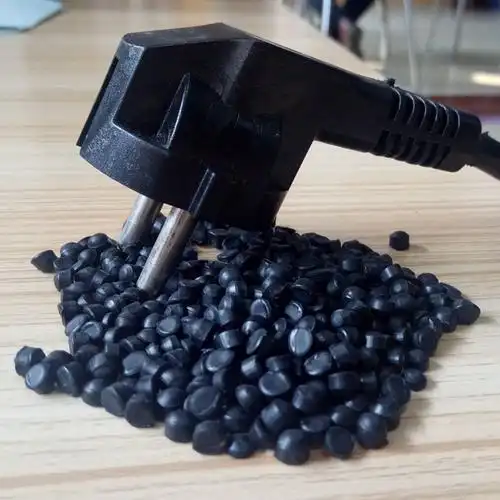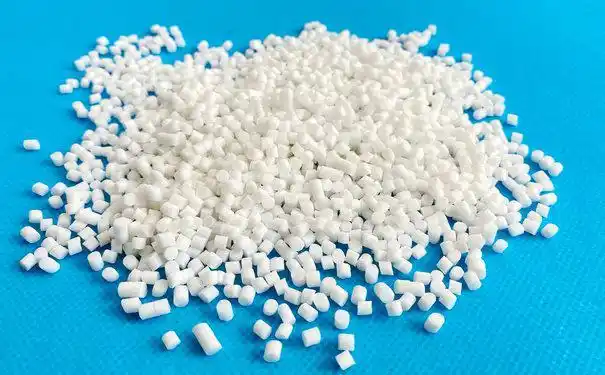In the world of thermoplastic elastomers (TPEs), understanding the nuances of hardness is crucial for selecting the right material for your specific application. Whether you’re designing a flexible grip for a handheld device, a sealing component for an automotive part, or a soft-touch overlay for a consumer electronics product, the hardness of the TPE can significantly impact its performance, feel, and durability. Today, I’m excited to dive into the comparison between TPE hardness 60A and 80A, helping you understand which one might be the better fit for your needs.
Understanding TPE Hardness
Before we delve into the comparison, let’s first clarify what TPE hardness means. Hardness in TPEs is typically measured using the Shore A scale, which ranges from 0A (extremely soft) to 100A (very hard, approaching the hardness of some rigid plastics). The Shore A scale is a standardized method for quantifying the hardness of elastomeric materials, providing a numerical value that can be used to compare different materials.

TPE Hardness 60A: The Softer Option
TPE with a hardness of 60A falls on the softer end of the Shore A scale. This hardness level is often chosen for applications where a soft, flexible, and tactile feel is desired. Here’s what you need to know about TPE 60A:
Feel and Texture: TPE 60A offers a soft, velvety texture that is pleasant to the touch. It’s often used in applications where user comfort is a priority, such as in handheld devices, medical equipment, or consumer electronics.
Flexibility: Due to its lower hardness, TPE 60A is highly flexible and can easily bend or stretch without breaking. This makes it suitable for applications that require a material to conform to irregular shapes or surfaces.
Sealing and Gasketing: TPE 60A’s softness and flexibility also make it an excellent choice for sealing and gasketing applications. It can create a tight seal against irregular surfaces, preventing the ingress of dust, moisture, or other contaminants.
Impact Resistance: While not as impact-resistant as some harder materials, TPE 60A still offers good shock absorption properties. This makes it suitable for applications where the material needs to withstand occasional impacts or drops.
Processing Considerations: TPE 60A is relatively easy to process using standard injection molding or extrusion techniques. Its lower hardness means that it can be molded into complex shapes with minimal warping or shrinkage.
TPE Hardness 80A: The Firmer Option
On the other hand, TPE with a hardness of 80A is firmer and more rigid compared to 60A. This hardness level is often chosen for applications where a bit more stiffness and durability are required. Here’s what sets TPE 80A apart:
Stiffness and Durability: TPE 80A offers a good balance of stiffness and flexibility. It’s firm enough to maintain its shape under normal use but still flexible enough to withstand some bending or twisting. This makes it suitable for applications that require a material to withstand regular wear and tear.
Grip and Traction: While not as soft as 60A, TPE 80A still provides a good grip and traction. It’s often used in applications where a non-slip surface is desired, such as in tool handles, sports equipment, or automotive components.
Chemical Resistance: TPE 80A typically offers better chemical resistance compared to softer TPEs. This makes it suitable for applications where the material may come into contact with oils, fuels, solvents, or other chemicals.
Dimensional Stability: Due to its higher hardness, TPE 80A offers better dimensional stability compared to 60A. It’s less likely to warp or shrink during processing or use, ensuring consistent performance and appearance.
Processing Considerations: While TPE 80A can still be processed using standard injection molding or extrusion techniques, its higher hardness may require slightly higher processing temperatures or pressures. Additionally, it may be more prone to flow marks or other cosmetic defects if not processed carefully.
Comparing TPE 60A and 80A
Now that we’ve had a closer look at each hardness level, let’s compare them based on several key factors that are important when selecting a TPE material.
Feel and Texture:
60A: Offers a soft, velvety texture that is pleasant to the touch.
80A: Offers a slightly firmer feel with good grip and traction.
Flexibility:
60A: Highly flexible and can easily bend or stretch without breaking.
80A: Still flexible but offers more stiffness and durability.
Sealing and Gasketing:
60A: Excellent for sealing and gasketing applications due to its softness and flexibility.
80A: Can also be used for sealing but may not conform as closely to irregular surfaces as 60A.
Impact Resistance:
60A: Offers good shock absorption properties.
80A: Also offers good impact resistance but may be slightly less forgiving than 60A in extreme cases.
Chemical Resistance:
60A: May have limited chemical resistance depending on the specific formulation.
80A: Typically offers better chemical resistance compared to 60A.
Dimensional Stability:
60A: May be more prone to warping or shrinkage during processing or use.
80A: Offers better dimensional stability due to its higher hardness.
Processing Considerations:
60A: Relatively easy to process using standard techniques.
80A: May require slightly higher processing temperatures or pressures and may be more prone to cosmetic defects.

Table: Comparison of TPE 60A and 80A
| Feature | TPE 60A | TPE 80A |
|---|---|---|
| Feel and Texture | Soft, velvety | Slightly firmer, good grip |
| Flexibility | Highly flexible | Flexible with more stiffness |
| Sealing and Gasketing | Excellent | Good but may not conform as closely |
| Impact Resistance | Good shock absorption | Good but slightly less forgiving |
| Chemical Resistance | Limited (varies by formulation) | Better than 60A |
| Dimensional Stability | May warp or shrink | Better dimensional stability |
| Processing Considerations | Easy to process | May require higher temps/pressures |
Real-World Applications and Considerations
In my experience, the choice between TPE 60A and 80A often depends on the specific application and requirements. Here are some real-world scenarios and considerations:
Consumer Electronics: For handheld devices or wearable technology, TPE 60A is often the preferred choice due to its soft, tactile feel and excellent flexibility. It can create a comfortable grip and provide a premium look and feel.
Automotive Components: In automotive applications, such as door handles, gear shift knobs, or interior trim, TPE 80A may be more suitable. It offers a good balance of stiffness and durability, as well as good chemical resistance to automotive fluids.
Medical Equipment: For medical devices that require a soft, non-irritating surface, TPE 60A is often used. Its softness and flexibility make it ideal for applications where patient comfort is a priority.
Sports Equipment: In sports equipment, such as grips for tennis rackets, golf clubs, or bicycles, TPE 80A may be preferred due to its good grip and traction properties. It can withstand regular use and provide a secure hold.
Industrial Applications: For industrial components that require a balance of flexibility and durability, such as seals, gaskets, or vibration dampeners, the choice between TPE 60A and 80A will depend on the specific operating conditions and requirements.

Additional Factors to Consider
When selecting between TPE 60A and 80A, there are a few additional factors to keep in mind:
Color and Appearance: Both TPE 60A and 80A can be formulated in a wide range of colors and finishes. However, the hardness level may affect the material’s ability to achieve certain surface textures or gloss levels.
Cost: The cost of TPE materials can vary depending on the specific formulation, hardness level, and supplier. In general, TPE 60A and 80A may be similarly priced, but it’s always worth checking with your supplier for the most up-to-date pricing information.
Environmental Considerations: If environmental sustainability is a concern, look for TPE materials that are recyclable or made from renewable resources. Some TPE formulations are designed to be more environmentally friendly than others.
Testing and Validation: Before finalizing your material selection, it’s important to conduct thorough testing and validation. This may include mechanical testing (such as tensile strength, elongation, or hardness measurements), chemical resistance testing, or user trials to assess the material’s feel and performance.
Conclusion
In conclusion, the choice between TPE hardness 60A and 80A depends on your specific needs and requirements. TPE 60A offers a soft, flexible, and tactile feel that is ideal for applications where user comfort is a priority. TPE 80A, on the other hand, provides a good balance of stiffness and durability, making it suitable for applications that require a bit more rigidity and chemical resistance.
By understanding the properties and applications of each hardness level, you can make an informed decision that ensures your TPE material provides optimal performance, feel, and durability. Remember to consider factors such as feel and texture, flexibility, sealing and gasketing capabilities, impact resistance, chemical resistance, dimensional stability, and processing considerations when making your selection.

Related Questions & Answers
Q1: Can TPE materials be recycled?
A1: Yes, many TPE materials are recyclable. However, the recyclability may depend on the specific formulation and supplier. It’s always worth checking with your supplier to confirm the recyclability of the TPE material you’re considering.
Q2: Are there any other hardness levels available in TPEs besides 60A and 80A?
A2: Yes, TPEs are available in a wide range of hardness levels on the Shore A scale, from very soft (around 0A) to very hard (approaching 100A). The specific hardness level you choose will depend on your application’s requirements.
Q3: Can TPE materials be painted or coated?
A3: Yes, TPE materials can be painted or coated to achieve specific colors, finishes, or functional properties. However, it’s important to choose a paint or coating that is compatible with the TPE material and to follow proper surface preparation and application techniques to ensure good adhesion and durability.
Q4: How do I test the hardness of a TPE material?
A4: The hardness of a TPE material can be tested using a Shore A durometer. This is a standardized instrument that measures the indentation resistance of the material. Simply press the durometer’s indentor into the material and read the hardness value on the scale.
Q5: Can TPE materials be used in outdoor applications?
A5: Yes, many TPE materials are suitable for outdoor applications. However, it’s important to choose a TPE formulation that offers good UV resistance and weatherability to ensure long-term performance and durability in outdoor environments.





